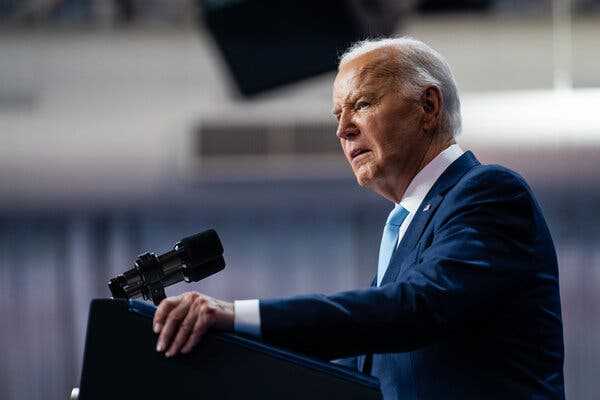In a classified document approved in March, the president ordered U.S. forces to prepare for possible coordinated nuclear confrontations with Russia, China and North Korea.
Listen to this article · 8:48 min Learn more
- Share full article

President Biden spent much of his political career as an advocate of nuclear nonproliferation and reducing the role of nuclear weapons in American defenses.
President Biden approved in March a highly classified nuclear strategic plan for the United States that, for the first time, reorients America’s deterrent strategy to focus on China’s rapid expansion in its nuclear arsenal.
The shift comes as the Pentagon believes China’s stockpiles will rival the size and diversity of the United States’ and Russia’s over the next decade.
The White House never announced that Mr. Biden had approved the revised strategy, called the “Nuclear Employment Guidance,” which also newly seeks to prepare the United States for possible coordinated nuclear challenges from China, Russia and North Korea. The document, updated every four years or so, is so highly classified that there are no electronic copies, only a small number of hard copies distributed to a few national security officials and Pentagon commanders.
But in recent speeches, two senior administration officials were allowed to allude to the change — in carefully constrained, single sentences — ahead of a more detailed, unclassified notification to Congress expected before Mr. Biden leaves office.
“The president recently issued updated nuclear-weapons employment guidance to account for multiple nuclear-armed adversaries,” Vipin Narang, an M.I.T. nuclear strategist who served in the Pentagon, said earlier this month before returning to academia. “And in particular,” he added, the weapons guidance accounted for “the significant increase in the size and diversity” of China’s nuclear arsenal.
In June, the National Security Council’s senior director for arms control and nonproliferation, Pranay Vaddi, also referred to the document, the first to examine in detail whether the United States is prepared to respond to nuclear crises that break out simultaneously or sequentially, with a combination of nuclear and nonnuclear weapons.
We are having trouble retrieving the article content.
Please enable JavaScript in your browser settings.
Thank you for your patience while we verify access. If you are in Reader mode please exit and log into your Times account, or subscribe for all of The Times.
Thank you for your patience while we verify access.
Already a subscriber? Log in.
Want all of The Times? Subscribe.
SKIP ADVERTISEMENT
Source: nytimes.com



